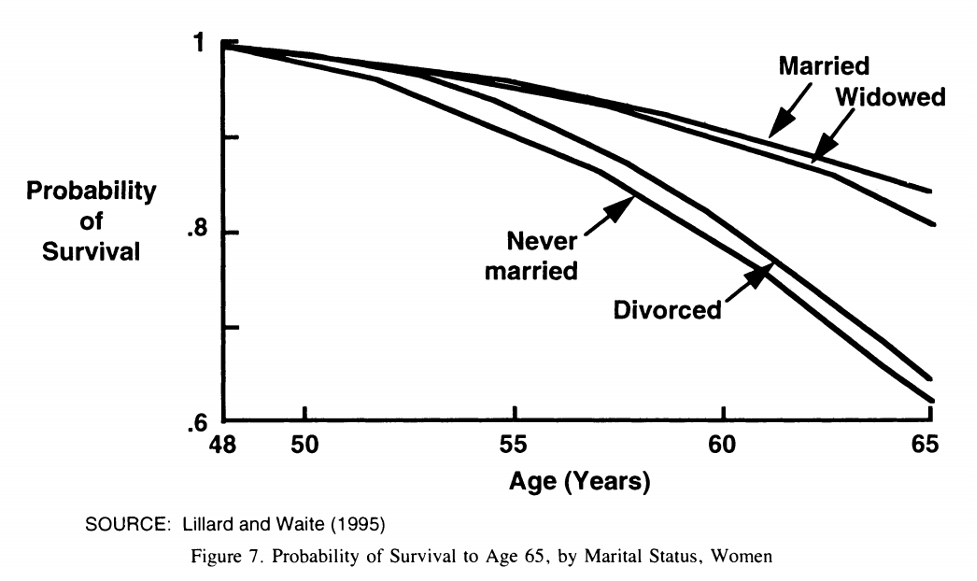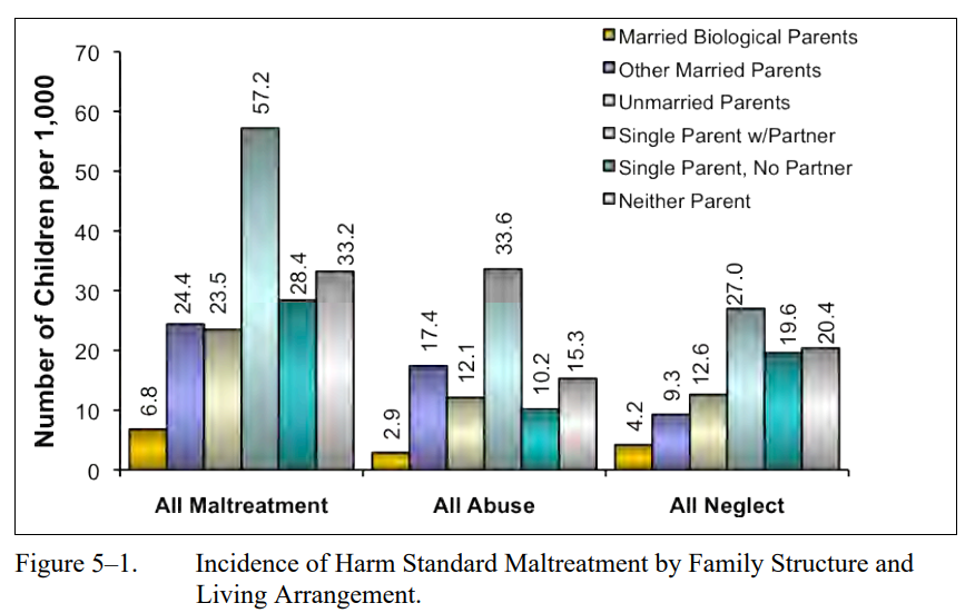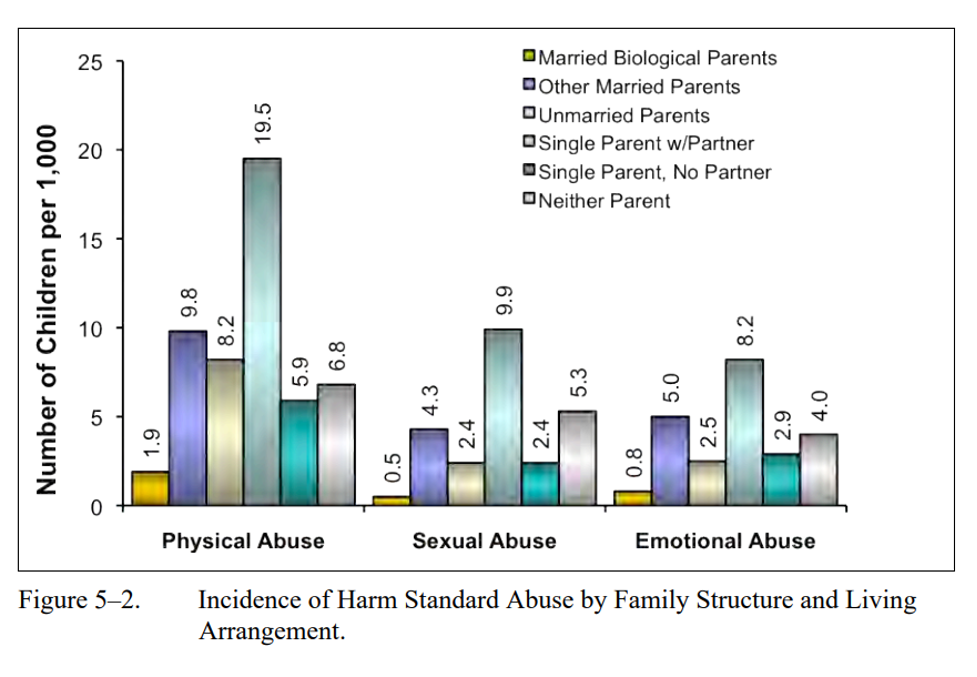Is marriage simply one life-choice option among many, or does marriage actually do important and unique things in our lives that make it markedly different from other relationships like singleness, dating, or cohabitation?
For anyone concerned about improving human and societal well-being, this is a critical question. And it is essential for us to understand that, based on the social science research, family relativism – the belief that one family form is as good as any other – is incompatible with the goal of enhanced human well-being for women, men, children and society at large. The data on this point has been consistently strong and persuasive for decades, going all the way back to the 1930s. This article is an update on this research.
Marriage and Physical Health
It has been known for decades that one’s marital status has a remarkably strong influence, for good or bad, on one’s overall physical health. This was established at Vanderbilt University in one of the first major published reports on the topic in 1973. It was followed up decades later by University of Chicago research showing how much longer marriage men and women are likely to live compared with their never married and divorced peers. The differences are dramatic.

The author of this piece, Linda Waite, who expanded this early work into the incredibly important book The Case for Marriage (2000), lamented academics were “not quick enough to consider the possibility that marriage causes some of the better outcomes we see for marrieds.” (emphasis in original)
More recent and increasingly sophisticated research supports and expands these earlier findings. A research review of a decade of research published in the Journal of Marriage and Family in 2020 entitled “Family Matters” explains the “preponderance of the evidence suggests that the married are in better health than the unmarried, cohabitors are in better health than the unmarried, but worse than the married…”
In 2017, the National Institutes of Health reported “possible biological reasons for heath benefits from marriage.” They explained this is because “Married people have lower levels of the stress hormone cortisol” and as a result, “marriage helps buffer people against daily stresses.”
Harvard Medical School also explains,
[T]here is fascinating — and compelling — research suggesting that married people enjoy better health than single people. For example, as compared with those who are single, those who are married tend to
– live longer
– have fewer strokes and heart attacks
– have a lower chance of becoming depressed
– be less likely to have advanced cancer at the time of diagnosis and more likely to survive cancer for a longer period of time
– survive a major operation more often.
This article offers four reasons for the improved health among marrieds. First is that married people tend to have better immune function. Marriage seems to actually change their bodies to be more resistant to disease. Second, married people take fewer risks, eat better, and maintain generally healthier lifestyles than those in other relational categories. Third, married people tend to have a better emotional support system around them that contributes to improved health and healing. Finally, married people tend to be healthier prior to marriage and stay that way.
Just one of the curious ways that marriage can actually change our bodies is evidenced in the fact that the elderly who are married tend to have longer telomeres. Telomeres are the interesting little protective end-caps on our chromosomes that directly contribute to a longer, healthier life.
Marriage and Psychological Health
Marriage protects our bodies. So what about our minds?
Mental health research dating back to the 1930s has documented how married individuals tend to enjoy markedly higher levels of mental health of all major measures than those in any other relational category. A 2019 literature review published in an academic economics journal explains that marriage is associated with “a decrease in number of days of poor mental health, a decrease in the likelihood of depressive disorder diagnosis, and an increase in overall life satisfaction.”
Another academic study published in 2020 explained that “All unmarried groups, including the cohabitating, divorced/separated, widowed, and never married, had significantly higher odds of developing dementia…than their married counterparts.”
A European study published in 2005 found “marriage makes people far less likely to suffer psychological illness” even more so than for unmarried cohabitors, so it is about more than just having someone else in your life. These scholars explain, “In the terminology of this research field, there is a genuine protection effect from marriage” that elevates both mental and physical heath, and markedly so. They add, “How marriage works its magic remains mysterious” but it is no mystery that it does bring substantial health physical and mental benefits.
Marriage Protects Against Poverty
We know that poverty brings many serious problems for all parts of society. Adequate financial resources bring needed improvements in housing, food, clothing, educational opportunity and safe neighborhoods. What role does marriage play in protecting against poverty?
Professor Linda Waite, whose early work we just noted, demonstrated the literature on this question is so vast she dedicated not just one entire chapter, but two, to the topic in her book The Case for Marriage. Just one data point comes from a study of Swedish workers, finding that “married men earned substantially more than unmarried men – even after taking into account their work hours, …their education and work experience, and whether or not they held supervisory responsibility.” (See chapters 7 and 8) Waite concludes, “If more money is your aim, getting married makes it far more likely that you will attain that part of the American dream.”
A 2017 study conducted in Germany found “both women and men experience substantial marriage wealth premiums not only in household wealth but also in personal wealth.” Research like this led Jonathan Rauch, a noted journalist with the National Journal, to publish a game-changing essay in 2001 entitled “The Widening Marriage Gap” explaining how marital status had become a more important driver of economic well-being than even race. He explained that presently “…[P]overty correlates more strongly with a family’s marital status than with its race.” In explaining the particular reasons why, Rauch colorfully concludes, “In other words, if you are a baby about to be born, your best odds are to choose married black parents over unmarried white ones” if economic security is your goal.
This fact is further demonstrated by the work of Professor Robert Lerman, an economist at American University concentrating on low-income populations. He explains “Married couples have incomes nearly four times their basic needs, a ratio that is 30-70 percent higher than what cohabiting couples experience and 63-113 higher than what single parents experience” even when these singles live with another adult.
Domestic Violence and Maltreatment
The most recent Report to Congress from the U.S. Department of Health and Human Services on Child Abuse and Neglect was published in 2010. This report demonstrates the dramatic differences in the major forms of abuse and maltreatment of children relative to the marital status of parents. As we see in the following two graphs, the numbers on the likelihood of abuse and maltreatment vary widely be family form and marital status.


Without question, and by far, the safest place for a child to live is with his or her own married mother and father. Family relativism puts children at seriously increased risk.
It has long and consistently been established in the social science literature that there is a “higher rate of domestic violence among cohabiting couples as compared with married couples.” The Journal of Family Issues revisited the contrasting levels of domestic violence found in married and cohabiting homes in 2018. Even has cohabitation has lost much of its social stigma, this research team explains, “Our work demonstrates that cohabitors have higher rates of intimate partner violence [compared to married] even after accounting for indicators of [relational] quality [and] commitment, histories of family and relationship violence, and socioeconomic measures.”
These are just a small sample of the extremely compelling research-based reasons for elevating one form of family over other relational options. And they have everything to do with the ways marriage between husband and wife contributes to dramatically improved levels of physical and mental health, protection from poverty and domestic violence and maltreatment. Neighborhoods with higher levels of a happy marriage are better, stronger, safer, and healthier communities.
Thus, fighting for and working toward a more pro-marriage culture is essential social justice work that all sectors of society should engage in.
Photo from Shutterstock
The post Research Update: The Compelling Health Benefits of Marriage appeared first on Daily Citizen.
Read More
Daily Citizen
